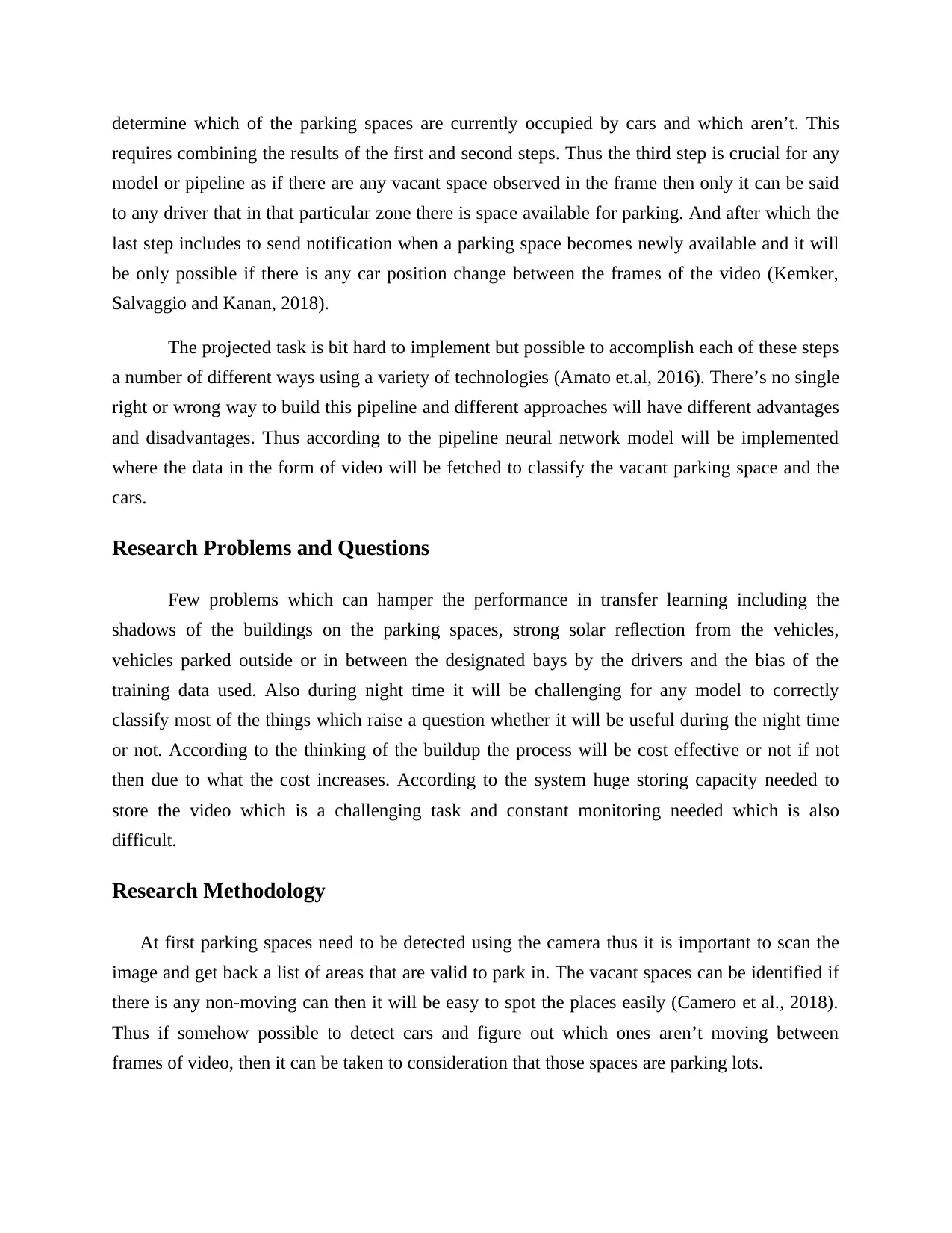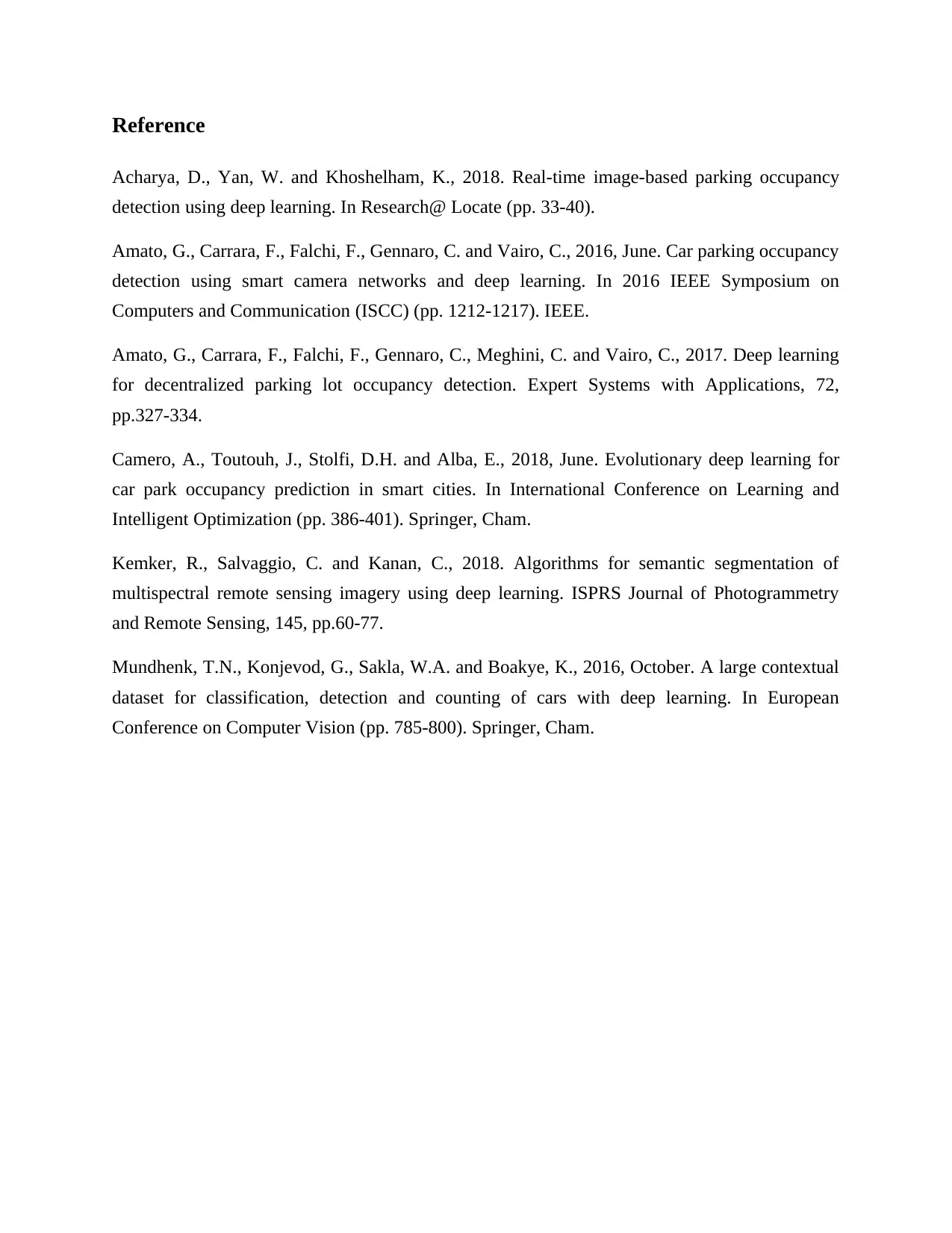Car Parking Space Finder Using Deep Learning: Project Report
VerifiedAdded on 2022/09/02
|4
|1343
|15
Project
AI Summary
This project focuses on developing a car parking space finder using deep learning and artificial intelligence to address the growing issue of parking shortages in urban areas. The project utilizes video input, potentially from a webcam, to analyze parking lot occupancy. The core methodology involves breaking down the problem into smaller, manageable tasks, such as detecting parking spaces and identifying cars within those spaces. The proposed solution employs machine learning techniques, including object detection algorithms like HOG, CNN, and advanced deep learning models like Mask R-CNN, Faster R-CNN, or YOLO, to accurately classify parking spaces as occupied or vacant. The system aims to send notifications when a parking space becomes available. The project addresses potential challenges like shadows, reflections, and nighttime visibility. The methodology includes detecting parking spaces, identifying cars, and determining the occupancy status. The final stage of the project involves alerting drivers about available parking spaces via SMS notifications. This assignment provides a detailed overview of the project, including related works, research problems, questions, methodology, and a timeline for completion.
1 out of 4






![[object Object]](/_next/static/media/star-bottom.7253800d.svg)